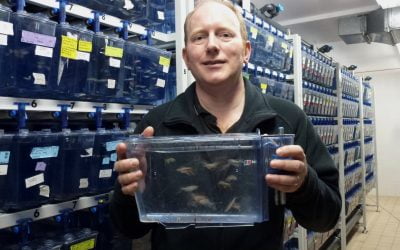If we are to learn more about CMT and the effectiveness of rehabilitation it is worth asking the patient and their caregiver. A recent Italian study by Padua et al recently described a survey of CMT patients and caregivers and their perspectives and perceptions of rehabilitation efficacy and needs. This cross sectional study used several standard questionnaires to survey 123 patients enrolled through clinical and genetic testing. It suggested not surprisingly that patients believe it is important to feel better after physical therapy. There was also a discrepancy between the perception of benefit from rehabilitation for the patient, versus the caregiver’s perception of benefit.
When we think of animal models for diseases like CMT, probably the fly is the furthest from our mind. Yet the humble fly may have overturned our basic understanding of the disease mechanism behind CMT2B becoming the first animal model for this disease. For CMT2B it was long thought to be a gain of function disease. A recent study by Cherry and co-workers at the University of Texas Southwestern Medical Center, show that neurons lacking a gene for rab7 result in neuropathy, while addition of Rab7 proteins could return function. Such insights can affect how we approach trying to find a cure for the disease, perhaps methods to increase Rab7 proteins while opposite to the previous dogma, may actually be right. There are still hurdles to overcome because the fly may not be a perfect model for human CMT2B.





The biggest question that needs to be answered is why does Rab7 function normally throughout the rest of the body. Rab7 is ubiquitous. Rab7 only has a problem in the extremities; hands and feet. I have CMT 2B. My family is the only one in America so far with this rare disease. I keep tabs on the research being done because I am hoping for a cure. I would be interested in speaking to anyone who wants more information or someone who has more information. Thanks.
Kelly, my wife and her family have CMT Type 2B and we’re diagnosed 17 years ago at UCLA. My wife has lost bladder and bowel function resulting in a interstem implant. She also has the typical atrophy in her extremities and Adees pupils and on and on.
My wife has type 2B with gross mutations as does her mother and brother. We live in California.
Hi, Matt, sorry I didn’t see this sooner. I just saw it. Please email me at [email protected] I would love to talk to you! So far my family is the only family in America that has been diagnosed with CMT 2B. There are 11 families listed in the world that have it. I don’t think your wife’s family is on the list, so it would be good to sort that out as her family would be second one diagnosed in USA.
Please make sure you JOIN the Global Registry for Inherited Neuropathies (GRIN).
Link: https://www.hnf-cure.org/registry/